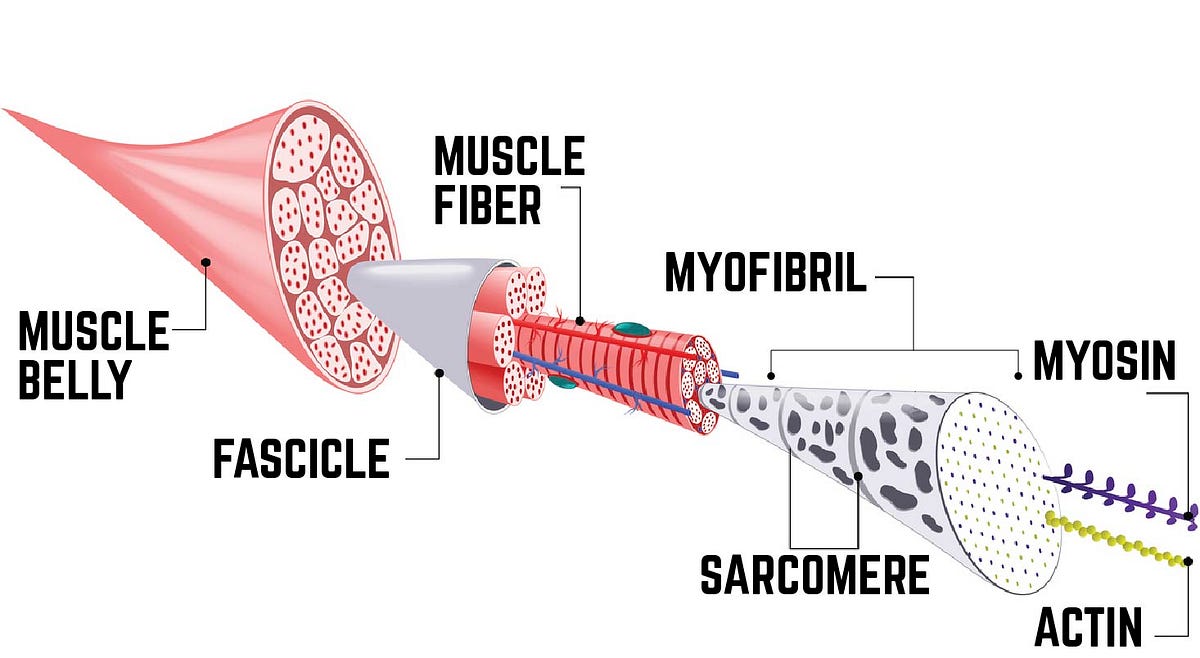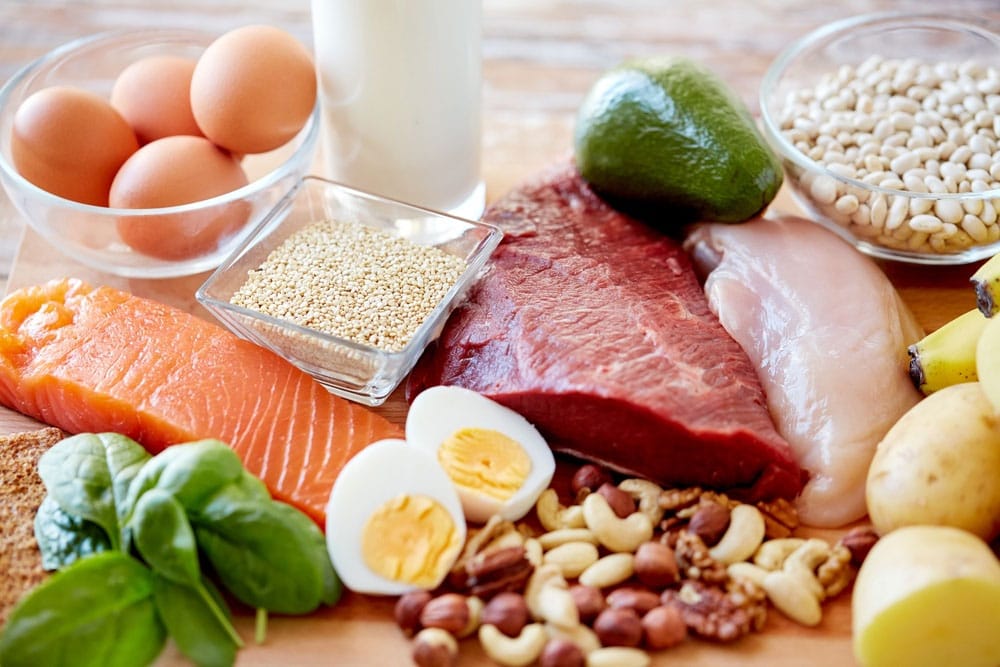Gaining Muscle: A Comprehensive Guide
Building muscle is a multifaceted process that requires dedication, consistency, and a strategic approach to training, nutrition, and recovery. Whether you're a beginner looking to pack on size or an experienced lifter aiming to break through plateaus, understanding the fundamental principles of muscle growth is essential for achieving your goals. In this comprehensive guide, we'll delve into the key factors involved in gaining muscle effectively.
Understanding Muscle Growth
Before diving into the specifics of training and nutrition, it's crucial to grasp the basic principles underlying muscle growth, scientifically known as hypertrophy. Muscle hypertrophy occurs when muscle fibers undergo structural changes in response to mechanical tension, metabolic stress, and muscle damage induced by resistance training.
There are two primary types of muscle hypertrophy:
Myofibrillar Hypertrophy: This type of hypertrophy involves an increase in the size and strength of individual muscle fibers. It's characterized by improvements in muscle contractile proteins, resulting in enhanced force production and muscular strength.
Sarcoplasmic Hypertrophy: Sarcoplasm refers to the fluid and energy stores within muscle cells. Sarcoplasmic hypertrophy involves an expansion of these intracellular components, leading to increased muscle size without necessarily corresponding gains in strength.
Most resistance training programs aim to stimulate both types of hypertrophy, although the specific training methods and protocols employed may vary depending on individual goals and preferences.
Resistance Training
Resistance training forms the cornerstone of any muscle-building program. By subjecting muscles to external resistance, such as weights, bands, or bodyweight, you create micro-tears in the muscle fibers, prompting the body to repair and rebuild them stronger and larger than before. Here are key principles to consider when designing your resistance training regimen:
Exercise Selection: Focus on compound exercises that target multiple muscle groups simultaneously. Examples include squats, deadlifts, bench presses, rows, overhead presses, and pull-ups. Compound movements recruit a greater number of muscle fibers, making them highly effective for stimulating muscle growth.
Progressive Overload: Continuously challenge your muscles by gradually increasing the weight, reps, or sets of your exercises over time. Progressive overload is the driving force behind muscle adaptation and growth. Keep a training log to track your progress and ensure consistent progression.
Volume and Intensity: Manipulate training volume (sets x reps x weight) and intensity (relative load or percentage of your one-rep max) to optimize muscle stimulation. Higher volume workouts with moderate to high intensity are typically effective for hypertrophy, although incorporating periods of lower volume, higher intensity training can also yield benefits.
Frequency: Train each muscle group 2-3 times per week to maximize muscle protein synthesis and hypertrophic response. Splitting your routine into upper body/lower body or push/pull/legs splits can help distribute training volume more evenly and prevent overtraining.
Rest and Recovery: Allow adequate rest between sets and workouts to facilitate muscle repair and growth. Aim for 48-72 hours of recovery between sessions targeting the same muscle groups. Listen to your body and prioritize quality sleep (7-9 hours per night) to optimize recovery processes.
Variety and Periodization: Periodically vary your training variables, such as exercises, rep ranges, and training modalities, to prevent plateaus and stimulate continued progress. Incorporating periodization principles, such as linear progression, undulating periodization, or block periodization, can help optimize long-term gains in muscle size and strength.
Nutrition for Muscle Growth
In addition to training, nutrition plays a critical role in supporting muscle growth and recovery. Without adequate nutrients, your body lacks the building blocks necessary to repair and build new muscle tissue. Here's how to structure your diet for optimal muscle gains:
Caloric Surplus: To gain muscle mass, you need to consume more calories than you expend, creating a caloric surplus. Aim for a moderate surplus of 250-500 calories per day to support muscle growth without excessive fat gain. Monitor your progress regularly and adjust your calorie intake as needed based on your rate of weight gain.
Protein Intake: Protein is the cornerstone of muscle repair and growth, providing the essential amino acids necessary for protein synthesis. Aim to consume about 0.8 to 1 gram of protein per pound of body weight per day, distributed evenly across meals. High-quality protein sources include lean meats, poultry, fish, eggs, dairy products, legumes, and tofu.
Carbohydrates and Fats: Carbohydrates serve as the body's primary energy source during intense workouts, while dietary fats play a crucial role in hormone production and cellular function. Include a balance of complex carbohydrates (whole grains, fruits, vegetables) and healthy fats (nuts, seeds, avocados, olive oil) in your diet to support energy levels and overall health.
Pre- and Post-Workout Nutrition: Consume a balanced meal or snack containing protein and carbohydrates 1-2 hours before your workout to fuel your training session. After your workout, prioritize fast-digesting protein sources, such as whey protein, along with carbohydrates to replenish glycogen stores and kickstart the muscle recovery process.
Meal Timing and Frequency: Spread your protein intake evenly throughout the day, aiming for 4-6 protein-rich meals or snacks spaced every 3-4 hours. This approach ensures a steady supply of amino acids for muscle repair and growth and helps optimize nutrient utilization.
Hydration: Adequate hydration is essential for optimal muscle function, nutrient transport, and overall performance. Drink plenty of water throughout the day, aiming for at least 8-10 glasses or more depending on your activity level and environmental conditions.
Supplements
While not essential, certain supplements may complement your diet and training regimen, potentially enhancing muscle growth and recovery. Here are some commonly used supplements for muscle building:
Whey Protein: Whey protein is a fast-digesting protein source that can be convenient for meeting your daily protein requirements, especially in situations where whole food sources are not readily available.
Creatine: Creatine is one of the most extensively researched supplements for improving strength and muscle mass. It enhances ATP regeneration, allowing for greater energy production during high-intensity exercise.
Branched-Chain Amino Acids (BCAAs): BCAAs, including leucine, isoleucine, and valine, play a key role in protein synthesis and muscle recovery. Consuming BCAAs before or during workouts may help reduce muscle breakdown and support muscle growth.
Beta-Alanine: Beta-alanine is an amino acid that can increase intramuscular levels of carnosine, a compound that buffers acid buildup during exercise. Supplementing with beta-alanine may improve muscular endurance and delay fatigue during intense training sessions.
Caffeine: Caffeine is a stimulant that can enhance focus, energy, and exercise performance. Consuming caffeine before workouts may improve strength, endurance, and overall training quality.
It's important to note that while supplements can be beneficial, they should not replace a balanced diet or proper training program. Prioritize whole foods and focus on meeting your nutritional needs through diet first before considering supplementation.
Lifestyle Factors
In addition to training and nutrition, several lifestyle factors can impact your ability to build muscle effectively. Consider the following tips to optimize your muscle-building efforts:
Manage Stress: Chronic stress can elevate cortisol levels, which may impair muscle growth and recovery. Incorporate stress-management techniques such as meditation, deep breathing exercises, or hobbies to promote relaxation and overall well-being.
Consistency and Patience: Building muscle is a gradual process that requires consistency, patience, and perseverance. Stay committed to your training and nutrition plan, and trust the process even when progress seems slow. Remember that sustainable results take time to manifest.
Listen to Your Body: Pay attention to your body's signals and adjust your training and nutrition accordingly. If you experience pain, fatigue, or lack of progress, reassess your approach and make necessary modifications to prevent injury and stagnation.
Recovery Strategies: Incorporate active recovery techniques such as foam rolling, stretching, yoga, or low-intensity cardio to promote circulation, reduce muscle soreness, and enhance recovery between workouts.
Seek Professional Guidance: If you're new to resistance training or unsure about how to structure your workouts and nutrition plan, consider seeking guidance from a qualified personal trainer, strength coach, or registered dietitian. These professionals can provide personalized recommendations based on your goals, preferences, and individual needs.
Conclusion
Gaining muscle is a multifaceted endeavor that requires a combination of structured resistance training, strategic nutrition, adequate rest, and lifestyle optimization. By applying the principles outlined in this guide and staying consistent with your efforts, you can achieve significant improvements in muscle size, strength, and overall physique. Remember to prioritize long-term health and well-being, and enjoy the journey of self-improvement and physical transformation. With dedication and perseverance, you can reach your muscle-building goals and unlock your full potential.




:max_bytes(150000):strip_icc()/GettyImages-455244937-598090e8b2144344af56ba5f836e9072.jpg)




0 Comments